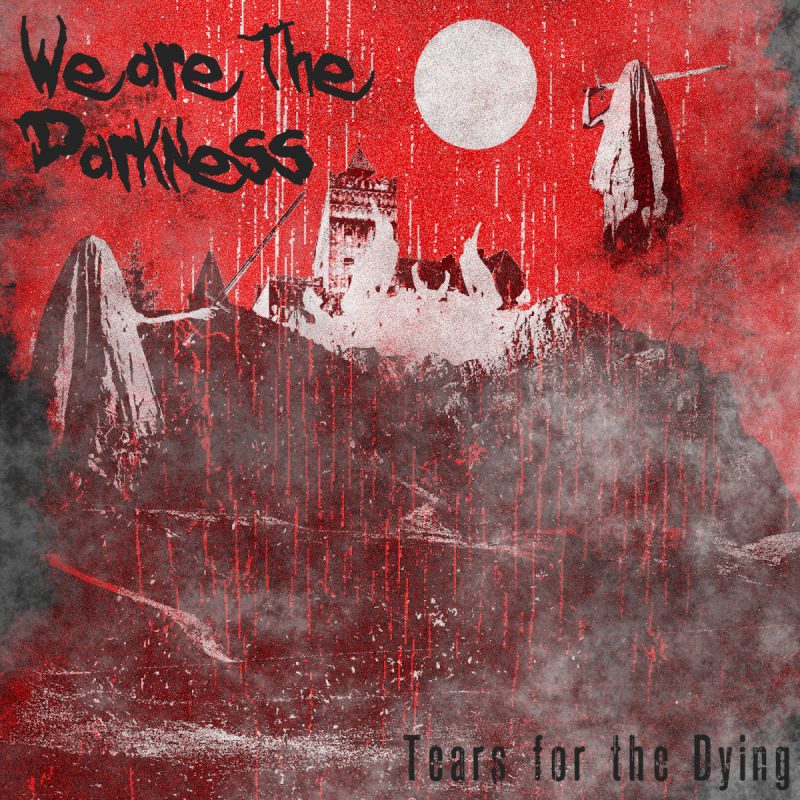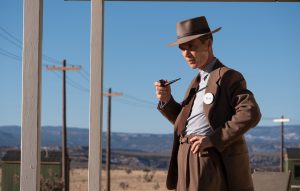Hailing from the vibrant city of Athens, Georgia, Tears for the Dying has emerged as a powerful and enchanting post-punk/goth band. Drawing inspiration from both contemporary and legacy acts such as Bauhaus, 45 Grave, Drab Majesty, and Rosegarden Funeral Party, the band has crafted a unique and bewitching soundscape that has entranced fans and acolytes alike.
Their music is a journey into the darker side of guitar-based music – a haunting and mesmerizing tapestry of sound that weaves together intricate melodies and ethereal rhythms. Their live performances are a dynamic and multifaceted encounter that offers a visceral, angst-infused deathrock experience, leaving audiences spellbound and wanting more.
Guiding the group with her distinct songwriting and lyrical prowess, Adria’s creative voice bears the indelible marks of her tumultuous upbringing in a modest Southeastern town. Her formative years were marred by the haunting spectres of religious trauma and relentless bullying, experiences that would later shape her artistic perspective. In the face of these trials, Adria sought refuge in the more enigmatic and unconventional realms of both art and society, forging a unique path through life’s challenging terrain.
We Are The Darkness, drawing from a classic goth and deathrock sound palette, delves into a captivating narrative: introducing an alien species thrust into the earthly realm. These extraterrestrial beings possess a remarkable and unsettling gift—the ability to detect the undercurrents of hatred coursing through the veins of higher life forms. More intriguingly, they exhibit an insatiable appetite for this malevolent energy, feeding upon it voraciously. This intriguing premise invites listeners to ponder the consequences of such an encounter and the depths of human emotion it unveils.
“It draws from our love of cosmic and otherworldly horror in book and film…even the campier examples,” she says.
Blake Pipes directed a monochromatic performance video for We Are The Darkness, capturing the high energy and chaos Tears For The Dying gives to each show.
Adria Stembridge stands as the creative force behind the compositions and voice. On the rhythmic front, Mick Payne skillfully mans the drums, providing the heartbeat of the sound. In the studio, mixing engineer Jason NeSmith lent his expertise, with mastering by Chase Park Transduction in Athens, GA.
Post-Punk.com spoke with Adria Stembridge about the band’s inspirations, songwriting process, how growing up trans and neurodivergent affects her artistic expression, and thoughts on the world today.
Your new single, ‘We Are the Darkness’, is said to draw from cosmic and otherworldly horror in books and films. Can you share more about the specific inspirations behind this song?
Horror literature and film has been a constant in my life going back to when I was a fifth grader and reading my first horror novel, The Blob. I was an avid reader and also loved science and sci-fi. It was a matter of time before the two interests crossed paths, and that happened with John Carpenter’s remake of The Thing in 1982. The eighties were a phenomenal time for sci-fi horror, with the popularity of Alien followed by the even more gruesome and frightening sequel, Aliens. Cosmic/space horror has been a lifelong love interest of mine, and this love found its way into our song We Are the Darkness.
With a strong emphasis on atmosphere and ambience in your music, how do you balance these elements with the raw, deathrock energy in your songwriting process? Also, could you delve into the thematic content of ‘We Are the Darkness’ and its significance to the band?
An unfair criticism of post-punk and goth music today is that it all sounds the same. It only takes a few minutes of listening to random releases over the past year to realize that people arguing that do not really listen to very much of the genre. This is especially true of our upcoming release, In the Shadow of the Midnight Sun. We Are the Darkness has more of a traditional guitar, bass, drum arrangement. Other tracks on the record pull us in new directions, hybrids of deathrock and darkwave, and there are tracks that provide calm to the raging inner storm heard earlier on the record. All of it is introspective and very Tears for the Dying.
The first side of In the Shadow of the Midnight Sun initially delves into the unwell state of someone experiencing a sustained and acute existential crisis. To many, waking up every day with severe mental health illness can feel like waking from one nightmare only to experience another in the waking world. We Are the Darkness was chosen as the opener to set the stage for side A of the album as it carries a certain urgency and anger. Time is running out, there is something terribly wrong in the world and we collectively feel like Alex at the end of A Clockwork Orange. Eyes fixated on a string of nightmarish scenes that we cannot escape from.
As an individual with autism, I think more in pictures and scenes. As someone with lifelong depression, it’s easier for me to speak introspectively by conjuring imagery from horror films I’ve seen and love.
Everyone knows Palestinians deserve a home, and yet every day the onslaught continues both in Gaza and in our feeds on the other side of the world. We Are the Darkness is rebellion against what feels like a growing movement of hatred based in racism, homophobia and transphobia. Social media allows us to know about George Floyd, and Gaza moments later, yet our voices are not being heard. Just a month ago Leonard Cure was shot dead by a sheriff for “resisting arrest” for a routine traffic stop when he literally just got out of wrongful imprisonment for 16 years. I’d have resisted arrest too. Children continue to die every day in Gaza. Trans teens are being denied medical care because some aging white politician’s bible tells them so. It is madness, yet I still have my voice and pen.
My grandfather fought against fascism in WWII, so it pains me to see this same spectre grow in popularity 70 odd years later, right in our own country. Why are people so beholden to the flag, not able to see what it is they are becoming? Life is give and take, we can’t impose our religions and wills on others. Nobody likes the feel of a heavy boot on their neck.
“Tears for the Dying has a distinctive style that resonates with fans of bands like Bauhaus and 45 Grave. How has the band’s sound evolved over time while maintaining its core identity, and how do these influences manifest in your current work?”
We’ve simply gotten better at songwriting over the years. Go Die was written in 2003 (though widely released in 2020). We still love playing it, and the urgency and anger it carries continues to resonate. With our 2018 Charon and 2020 Memories releases, we were basically catching up the back catalogue with many of songs having been written in the early 00’s. For newer tracks on those releases, we were trying to find our footing. And we found solid footing in many of those tracks.
As our lineup changed we’ve settled into a new working situation with Mick Payne on live drums. This brought a new level of intensity to our sound. Last year we had an opportunity to try IEMs (In-ear monitors) for the first time, and we loved the setup. With IEMs, we were afforded the ability of playing to click track – and using synthbass and backtracks with acoustic drums in live situations.
So, this new ability opened new doors for us musically. We aren’t moving away from our deathrock/punk roots – much of the new record is still the traditional arrangement of drums, guitar and bass – but we are expanding on and redefining how we approach our core genre while exploring adjacent sounds and feels. We’re not talking Ween levels of eclectic genre hopping, but there is some movement on the new record, while keeping the songs still very much Tears. Evolution doesn’t mean divorcing and/or denying your past, and becoming something new and foreign. We are still who we are, even as grow and change across time.
Adria’s experiences growing up trans and autistic in a small town appear to have been a profound influence on the band’s music. How do these personal narratives and struggles against societal challenges shape the lyrical content and overall message of your songs?
When I was in my late teens and early 20s, I leaned heavily into punk for dealing with lifes challenges. It was good to scream and slam into other punks at shows. I still love the high energy and intensity, however over time that outward anger I used to have began pointing inward. I was officially diagnosed with Autism Spectrum Disorder and ADHD almost 15 years ago, though I was very much undiagnosed as a child. I suspect my father was as well. A common hallmark of neurodivergent individuals are challenges with social situations. We struggle with understanding social cues that most people take for granted.
The social awkwardness autistic people experience often leads us to be victims of bullying – especially in primary school, but bullying changes and takes on new forms later in life. For many of us, it never really goes away. This combined with general lacking of basic social skills means we have a harder time making and keeping friends in our lives. Add to that being trans, and this lead to a lifelong history of depression and anxiety.
In the Shadow of the Midnight Sun is not exactly a concept album, but close. The first five songs focus, somewhat abstractly, on the existential horror that sometimes goes with severe mental health illness…The next two tracks change tone, and offer the hope that things can and will get better. We just have to put the work in, it doesn’t happen automatically. The mental health nightmares can stop. We want to leave listeners with that hope.
How has this new composition of the band influenced the direction of your music, particularly in terms of collaboration and bringing fresh perspectives to your sound and performances?”
Mick brings an intensity and aggression to our music that was never fully realized in the past. He’s a phenomenal guitarist and songwriter on his own, and he’s been a joy to have around when technical questions of theory come up. Mick and I both love a lot of the same bands, and our shared interest in New Order probably surfaced on a couple tracks from the new record.
Our previous guitarist, Joshua Broughton, plays on many tracks on the new record. Since joining Tears in 2021, he made an 1.5 hour drive one way twice a week for practice, and ultimately that became the death of a thousand paper cuts. We parted ways amicably and are still good friends today.
Robyn is the newest member of our group. She and I knew each other going back to 2017 or so on socials. She joined the band six months ago and has worked very hard in learning many technically challenging songs from our new record and back catalogue. She makes an appearance on the new record, and will be with us when we hit the road on our next tour. Tears would not be what we are without these fine people, and I’m honored to perform and create with them.
Follow Tears For The Dying:
Instagram
Spotify
Bandcamp
YouTube
Website
The post Athens Georgia Deathrock Ensemble Tears for the Dying Debuts Video for “We Are the Darkness” appeared first on Post-Punk.com.




